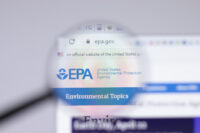As today’s workplace becomes more complex, regulation of that workplace increases. In this section, you’ll find the practical advice you need to understand exactly what OSHA, other federal agencies, and their state counterparts, require of you, and to comply in the ways that best satisfy both your and their needs. Look also for important court decisions, advice on how to handle enforcement actions, and news of upcoming changes in workplace health and safety law.
Free Special Report: What to Expect from an OSHA Inspection
On this week’s episode of EHSDA Shorts, we hear from Karen Hamel, regulatory expert and trainer at HalenHardy, on her thoughts about how to avoid OSHA’s number one most-violated standard: fall protection. Tune in to hear her insights.
An Illinois grain cooperative is facing a $629,946 Occupational Safety and Health Administration (OSHA) penalty for its failure to follow required safety procedures that contributed to a 27-year-old worker suffering a partial amputation of his right leg when a paddle conveyor was left running when he and two other employees entered a soybean bin for […]
Back to Basics is a weekly feature that highlights important but possibly overlooked information that any EHS professional should know. This week, we examine OSHA inspections and what employers can expect to happen during an inspection. This week is EHS Daily Advisor’s Compliance Week, which exists to help safety professionals stay up to date […]
On January 19, 2023, the EPA announced its proposed 2024–2027 National Enforcement and Compliance Initiatives (NECIs). Every 4 years, the Agency selects national initiatives to focus resources on serious and widespread environmental problems where federal enforcement can make a difference. The primary objective of these initiatives is to protect human health and the environment by […]
A Quincy, Massachusetts, roofer is facing $137,508 in new Occupational Safety and Health Administration fines after the agency cited The Roof Kings LLC for again knowingly exposing workers to life-threatening fall injuries, OSHA announced February 9. On December 8, OSHA inspected a worksite on Roach Street in Quincy to check if The Roof Kings was […]
A Manchester, Connecticut, construction firm and a Kansas City, Kansas, heating, ventilation, and air-conditioning (HVAC) contractor face six-figure Occupational Safety and Health Administration (OSHA) penalties following worker fatalities. OSHA cited U.S. Engineering Services of Kansas City, Kansas, with serious and repeat serious violations, proposing penalties totaling $197,642, the agency announced January 31. On August 24, […]
On January 26, the Occupational Safety and Health Administration (OSHA) issued new enforcement guidance, allowing “instance-by-instance” citations for “high-gravity” serious violations of several agency standards. Regional administrators and area office directors will have the authority to issue instance-by-instance citations for violations of fall protection, lockout/tagout, machine guarding, permit-required confined space, respiratory protection, and trenching standards, […]
It is important that all work-related near misses in a workplace be investigated along with those that involve injuries, illnesses, and fatalities. Near misses are those that could have caused harm if there were different circumstances surrounding the incident. Defining the causes of those incidents and how to prevent them were explored in a recent […]
On January 18, 2023, the long-awaited final “Revised Definition of ‘Waters of the United States (WOTUS)’” rule was published in the Federal Register. It is set to go into effect March 20, 2023. The definition of WOTUS is the key to determining the EPA’s authority under the Clean Water Act (CWA). This final rule repeals […]
The EPA has approved the use of the SnifferDRONE, an environmental technology product produced by Sniffer Robotics LLC, as an alternative for monitoring methane emissions from landfills. Certain landfills are required to perform surface emissions monitoring (SEM) procedures on a quarterly basis to demonstrate compliance with the 500 parts per million (ppm) above background concentration […]










